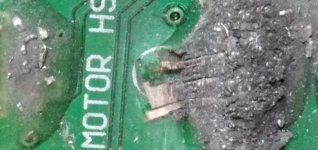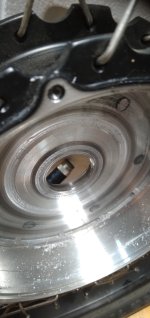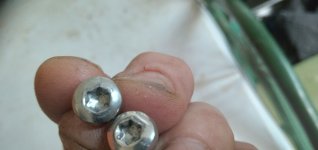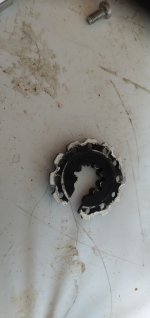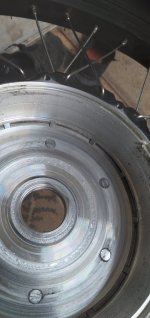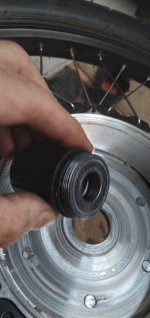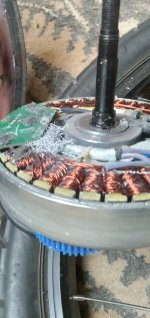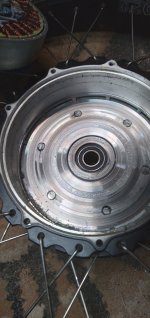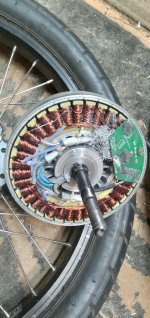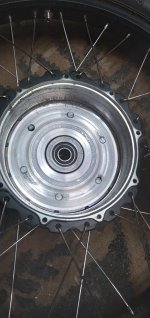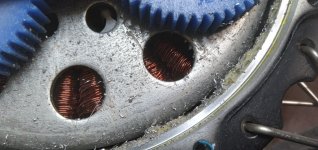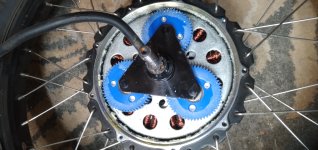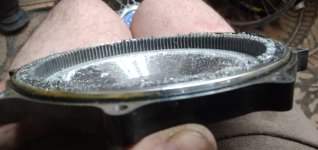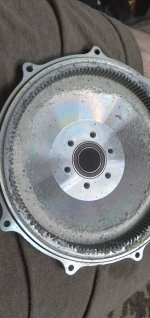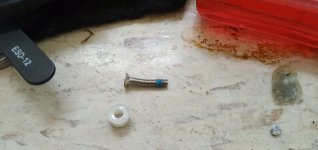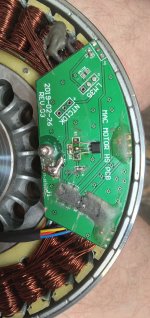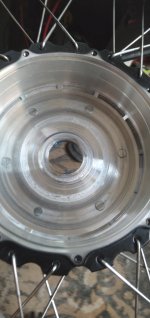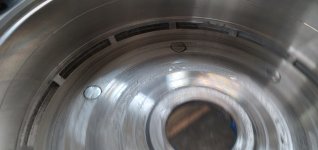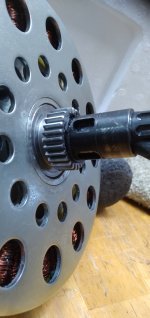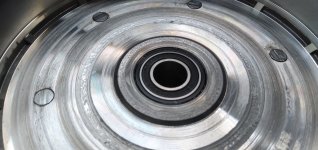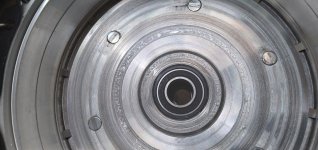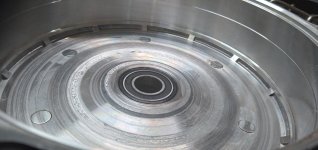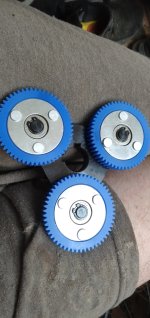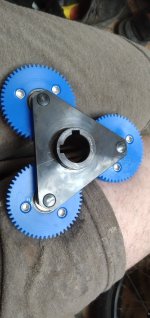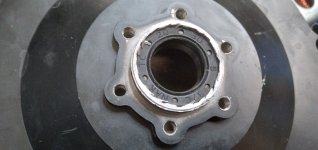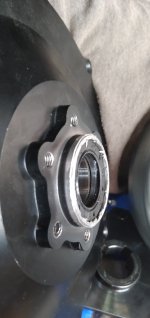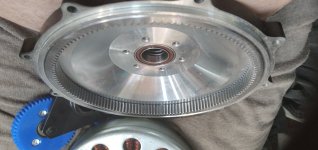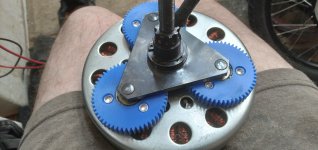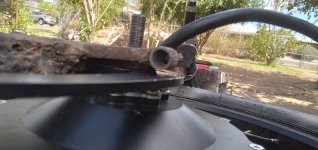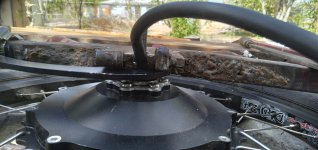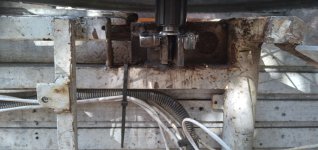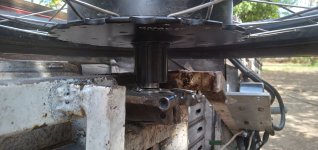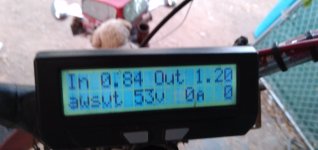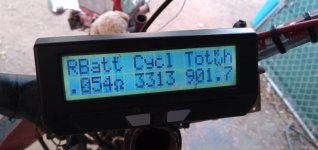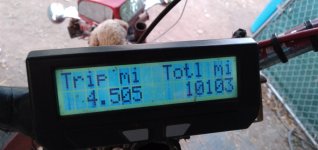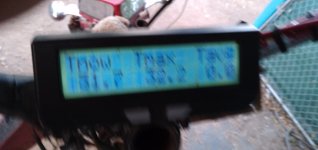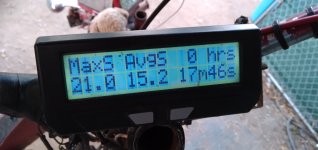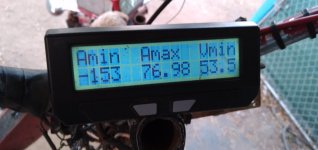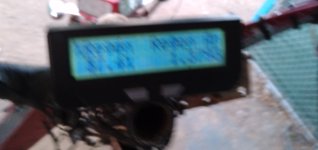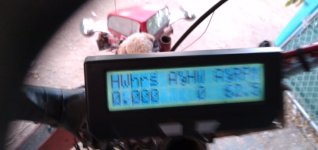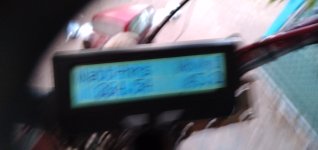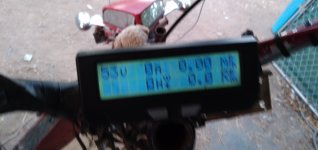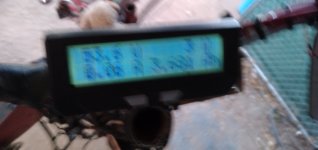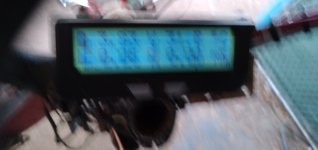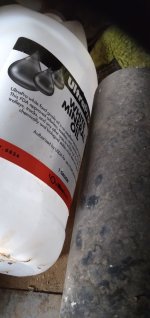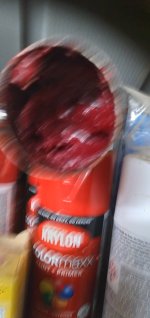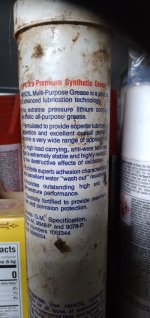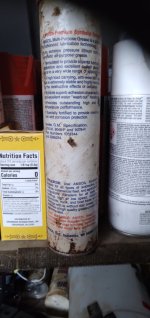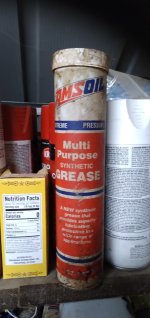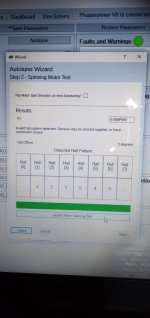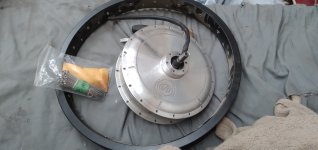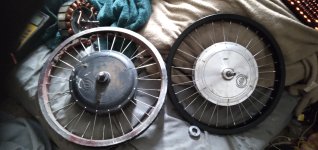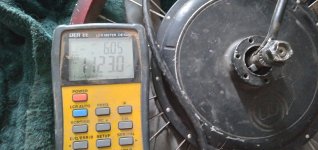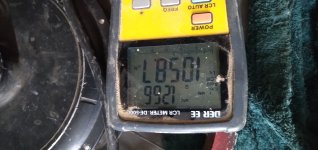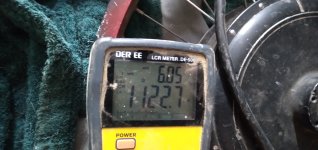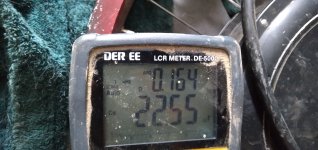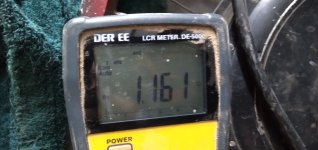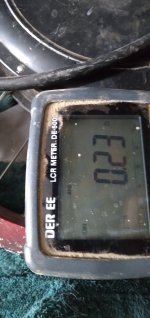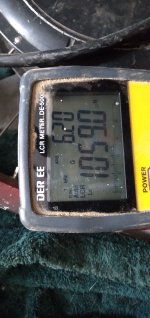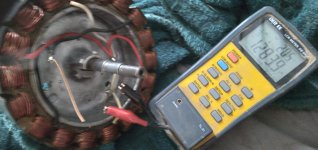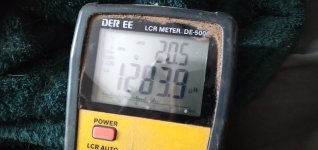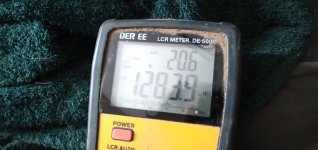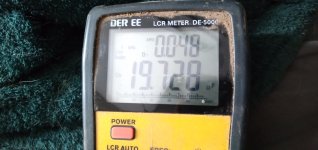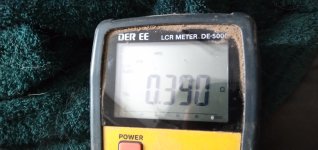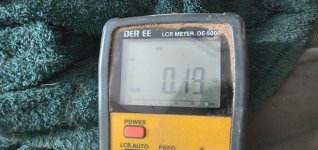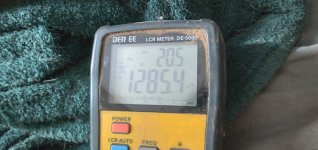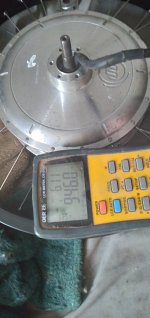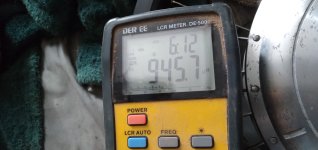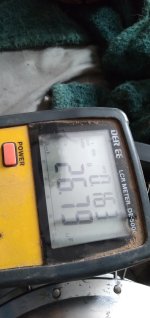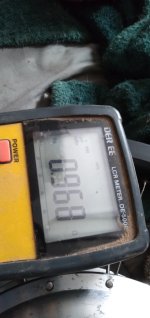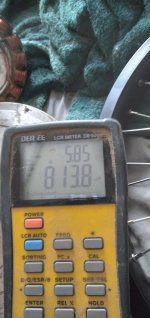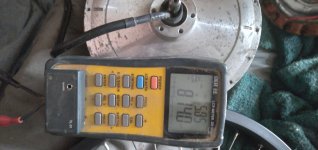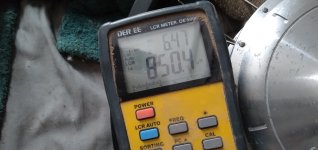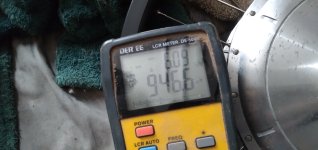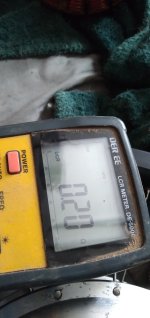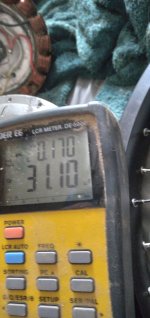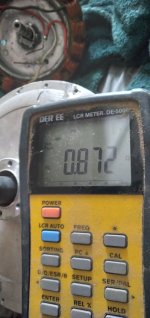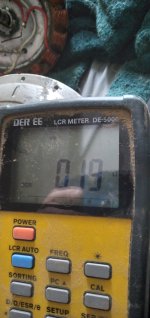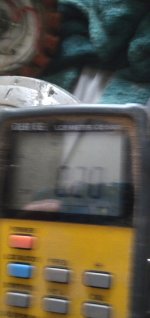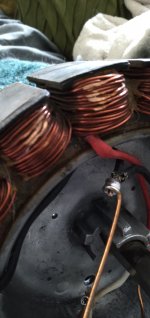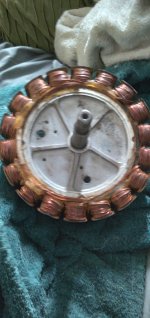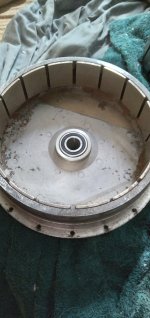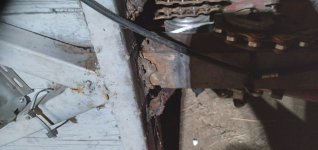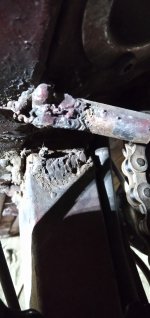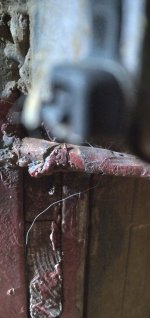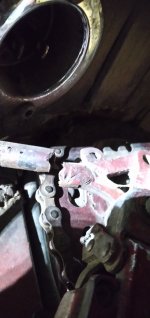Yes, it's about as bad as the Fusin geared hub I had to use a hose clamp on the clutch (cracked) to get home about a decade ago. The clamp was *just* too wide so it scraped the side cover up...
On this GMAC: Repair successful (so far).
I had to almost completely disassemble it to clean the shavings out; the motor bell / stator were full of them, but thankfully those were dry and could be blown out. The ones in the gear side were all sticky with gear grease, so I had to take the gear assembly off the motor core, and then clean it and the side cover/ring gear and the main housing with first a toothbrush and wipe that with a paper towel after every stroke on the gear teeth, then soap those parts down and wash them, repeatedly, to get all the metal-filled grease out of them. I didn't want to wet the motor itself, so I just brushed and toweled the sun gear and axle on that side as well as possible, and wiped down the bell when done.
Once done with that I sun-dried all the parts for the middle of the day during lunch break and getting some other chores done, then I used a light machine oil to seep into the bearings in case they got washed out too. (hopefully all the water is out of them; I didn't have time to do it the way I would like that would be nearly certain to do it).
While they were drying I also replaced the scraped-off wheelspeed hall sensor, and found that there is a PCB defect that had apparently been solder-bridged over; this solder had been scraped up and pushed against the screw that holds the PCB in place, so i rebridged it. (at first I thought the piled up metal on the screw head was aluminum, but it was not--it was solder!) I forgot to take a pic before doing that, but it looked like the masking for that part of the PCB etching failed during etch and copper was randomly eaten away in one area of the ground plane there. You can still see some of that in the pic of the bridging, sort of. The screw itself was bent from the scraping, so I replaced it with a nearly-identical one (rounded head instead of countersunk) out of my EIG pack spares (used to bolt the busbars to the cells).
I used blue loctite on the threads for the freehub-cover interface, and slipped the main cassette body on there and used an improvised chainwhip to tighten it down (I don't have the right tool to do it via the freehub notches).
Then I reassembled the motor and put it back on the trike, without the cassette installed just to make it easier to see all the clearances and whether the freehub ever changes position.
I did first modify the inboard dropout slightly, adding some weld material at the top so the axle can't go upward any farther than the outboard one (not sure how I missed doing that when I built these new clamping dropouts). I took some better pics of the clearances around everything, showing the washer/spacer stacks, etc.; those are all below with the rest of the pics.
Examining everything, I also realized that the freehub would *tighten* if it had contacted anything on the trike while riding, not loosen, so whatever went wrong doesn't have anything to do with that...but I still can't figure out how it could possibly have come loose, except for one "wild" theory:
Previously i had a Crystalyte 5348 (IIRC) whose side cover would *always* loosen and unscrew all of it's cover screws (it did this back on CrazyBike2, and then on SB Cruiser later). I even loctited them, and once superglued them, and the best that did was to keep the threaded part in and just shear off the head once the screws to either side had loosened enough.

I used several different kinds of screws with different heads, to no avail. Some stayed longer than others, but nothing was ever permanent, and the older the motor got the worse the problem was. Eventually I took the motor off SBC to put one of those MXUS 450x (3 or 4, forget which) on there instead, and when I took the 5348's cover off, I found a section of axle at the ID of the bearing that had "compressed" just slightly--the axle was chrome plated, with copper under that, and presumably the usual crappy steel. It had not worn the chrome or copper off, it had compressed it or deformed it so it was just barely visibly recessed in that region vs the rest of the axle, and not symmetrically around the circumference either. So what I *think* was causing that cover screw problem was some form of precession caused by a cam-like force on the cover, either from it being out of round, or the axle being out of round, etc.
So...on the GMAC, if there are precessive forces acting on the freehub/cover threads (like from the weight of the cassette/freehub against the cover, etc, I don't really know), then it could unscrew as well--this would probably never happen on a bike with a pedal chain on it if the bike was ever pedalled even slightly faster than the motor was turning, as the forces against the freehub in this direction would rescrew it into the cover.
Without the mass of the cassette on there, and with the loctite, hopefully whatever forces unscrewed it this time will not be able to do it again, but I'll have to check it every ride just to make sure.
I took it for some short test rides around the neighborhood, and this time was able to also try out the regen braking...oohhhh, it's sweeeeet.. :drooling face: With it calibrated to match the CA braking output thru the throttle, it plus the ancient grinfineon on the other side that also does this, it will slow the bike anything from very gently to a pretty hard stop in a very short distance (I haven't measured that yet). In combination with the front disc, if I mash both levers down hard (left for rear variable regen, right for front disc), it'll stop me in less than a few feet. Feels like two, but it's probably more.
I'm sure repeating that a lot would heat things up, but nothing was much warmer than ambient by the time I was done with the mile or so of short tests. (I used the WP8's temperature sensor pin to pass the signal thru to the CA so I can monitor this realtime--it's at least two degrees C high from what the PR suite says the controller sees, at ambient, reporting 25C when the PR sees 23C, don't know what the differences at higher temps are yet).
Oh, and the motor doesnt' feel nearly as draggy as it did when first installed, so this freehub problem was probably already happening around the time I first installed it, though I don't think the motor was carving up the case inside yet (and I know the torque arm wasn't being carved by the disc bolts yet or I would have seen that when checking everything for clearances and rubbing after the first commute).
There is one problem still--two of the halls don't work--the PR suite reports they appear to be shorted to 5v, stuck off. I foolishly did not test them while I had the motor open, which would have been ridiculously easy, so I'll have to take it off the trike to fix those. Since it still works well enough in sensorless mode (other than starting from a complete stop being a little jerky), I didn't do that today because I'm already worn out, and I didn't want to screw anything up in the process of taking it off / putting it on / etc and then have to be troubleshooting stuff all night and have to work in the morning. Maybe next weekend.
And SB Cruiser itself passed the 10,000 mile mark at some point recently; I think it's now at 10,082 miles on the odo.
PIcs below, and I'll probably post again with stuff I forgot to put in this one.






